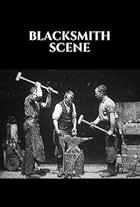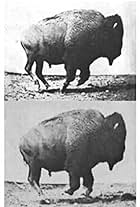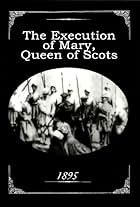IMDb RATING
5.3/10
1.6K
YOUR RATING
The very first American film shown to public audiences and the press. It depicts William K.L. Dickson taking off his hat and greeting the audience.The very first American film shown to public audiences and the press. It depicts William K.L. Dickson taking off his hat and greeting the audience.The very first American film shown to public audiences and the press. It depicts William K.L. Dickson taking off his hat and greeting the audience.
- Director
- Star
Photos
Storyline
Did you know
- TriviaAlthough this is often incorrectly credited as the first film made in the USA, it was, in fact the second. Dickson's Monkeyshines No. 1, seems to actually be the first American film, though it was not shown to the public upon completion. This was, however, the very first American (and Edison) film shown to public audiences and the press.
- ConnectionsFeatured in Edison: The Invention of the Movies (2005)
Featured review
When during an afternoon in Leeds, England, french inventor Louis Le Prince tested his latest invention and shot the first movie in the world, he didn't realize the magnitude of what was just starting that long lost day of 1888. Sadly, Le Prince would not live to see the results of his experiments, and it would be other people would be the ones in charge to improve on his idea and create what we now know as cinema. One of those who would become the first filmmakers would be the Scottish inventor William K.L. Dickson, who while working in America along Thomas Alva Edison invented the Kinetoscope in 1890. The Kinetoscope was a device that showed short movies individually through the window of a cabinet housing its components, in a manner that would earn it the nickname of "peepshow machine". However, the birth of Kinetoscope wasn't easy, and many experiments had to be done before its public release in 1893.
The first experiments were of course the famous "Monkeyshines" films, three movies where the camera captures (or tries to capture) the images of Edison's workers as they move in front of it. While not exactly successful (image looks pretty bad), those movies were the very first films shot in America and showed Edison the enormous potential of Dickson's invention. After many experiments, Dickson achieved the quality he desired and made the movie that would be shown to the press and 150 members of the National Federation of Women's Clubs in a private demonstration of the invention that took place on May 20, 1891. The first movie shown was this one, nowadays aptly titled "Dickson Greeting" because it consisted of a short 3 seconds scene where William K.L. Dickson appeared bowing and smiling, as if he was indeed greeting the first audience of his Kinetoscope.
Watching how Dickson's work improved from the "Monkeyshines" experiments to this movie is an amazing experience, as the quality of his movies improved drastically from bizarre images without any shape that appeared in his first three films to the high quality of his image moving gracefully in "Dickson Greeting". The fact that all this improvements took him less than a year is certainly a testament of the enormous genius of this man, who singlehandedly put Edison's company on the race towards motion pictures. On that day of May, this along with two other Kinetoscope movies (probably the two shorts about boxing) were shown to an audience for the first time, in what would mark the birth of the first device invented to watch movies. Kinetoscope, cinema's "granddaddy" had just been born. 8/10
The first experiments were of course the famous "Monkeyshines" films, three movies where the camera captures (or tries to capture) the images of Edison's workers as they move in front of it. While not exactly successful (image looks pretty bad), those movies were the very first films shot in America and showed Edison the enormous potential of Dickson's invention. After many experiments, Dickson achieved the quality he desired and made the movie that would be shown to the press and 150 members of the National Federation of Women's Clubs in a private demonstration of the invention that took place on May 20, 1891. The first movie shown was this one, nowadays aptly titled "Dickson Greeting" because it consisted of a short 3 seconds scene where William K.L. Dickson appeared bowing and smiling, as if he was indeed greeting the first audience of his Kinetoscope.
Watching how Dickson's work improved from the "Monkeyshines" experiments to this movie is an amazing experience, as the quality of his movies improved drastically from bizarre images without any shape that appeared in his first three films to the high quality of his image moving gracefully in "Dickson Greeting". The fact that all this improvements took him less than a year is certainly a testament of the enormous genius of this man, who singlehandedly put Edison's company on the race towards motion pictures. On that day of May, this along with two other Kinetoscope movies (probably the two shorts about boxing) were shown to an audience for the first time, in what would mark the birth of the first device invented to watch movies. Kinetoscope, cinema's "granddaddy" had just been born. 8/10
Details
- Runtime1 minute
- Color
- Sound mix
Contribute to this page
Suggest an edit or add missing content

















